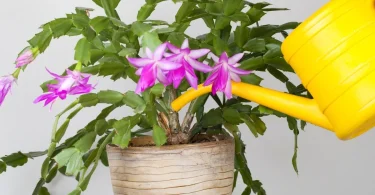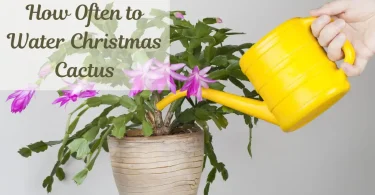Polka Dot Plants also known as Hypoestes phyllostachya are popular for the intensely colored leaves that come in spots that resemble the dots of a polka dot. These plants that originated from Madagascar can also be grown indoors and are excellent plants for an indoor garden. It is critical to always take good care of these plants should they be planted so that they may consistently be fantastic. In this particular article, you will learn all that is necessary to know regarding the Polka Dot Plant.

1. Understanding the Polka Dot Plant
The Polka Dot Plant is one of the most beloved flowers, but there still are aspects about it that can be unknown to many people. Polka Dot Plants particularly have oval-shaped leaves which range from pink, red, white, and green and have spots or small dots of a different color. They are often small and when matured become bushy and these are best suited for small pots or mixed containers. In ideal environments, they can reach up to 12 inches in both height and width thus creating a dense and beautiful carpet.
2. Light Requirements
Light is one of the most critical elements in the Polka Dot Plant care since the plant requires a specific amount of it. It is important to know that these plants enjoy light that is somewhat bright but not direct. Their hues can wash out if planted in an area that receives too much direct sun, while insufficient amounts of light would cause the coleus plants to stretch out and develop mediocre foliage. It is recommended that you put your Polka Dot Plant by a North or East window that receives fairly bright light the whole day.
3. Watering Needs
Watering is one of the most important things that control the growth and health of Polka Dot Plants. The plant prefers a moderate level of moisture in the soil but because of the overwatering, it is very vulnerable to root rot. Water the plant when the soil one inch above the pot feels dry to the touch; water the plant until excess water falls through the drainage hole. Cut down on watering during winter but do not let the plant stand in water or become too dry.

4. Temperature and Humidity
As mentioned before, the environment of Polka Dot Plant suits an average room temp of around 65-75°F (18-24°C). : The temperature also plays a crucial role in their comfort where they like an intermediate level of humidity. To enhance the humidity, there is a need to spray the leaves more often or use a humidifier nearby since during the winter months the indoor air is usually dry.
5. Soil Requirements
Grow your Polka Dot Plant in an organism potting mix that drains well. Any house plant or African violet formula is fine. Check that the pot has holes for drainage to avoid water accumulating at the bottom of the pot which leads to root rot.
6. Fertilizing
Annually, fertilize your Polka Dot Plant with a balanced, water-soluble solution during the period of active growth, which is spring and summer, and at intervals of 4-6 weeks. Feeding should be minimized in the autumn and winter months due to the slower rate of development of the cereal plants. Avoid making the mistake of over-fertilizing to prevent the accumulation of salty deposits on the surface of the soil and damage the roots.
7. Pruning and Pinching
Necessary pruning and pinching techniques should be applied to ensure a dense and compact appearance and to encourage new bud formation. Prune young shoots to stimulate the development of new branches and remove any long straggling or malformed shoots that may detract from the plant’s appearance.
8. Propagation
Polka Dot Plants are quite easy to propagate. Seeds can be directly sown in water or soil while stem cuttings or other parts of the plant can also be propagated in water or soil. Cutting should be taken by 3-4 inches from healthy and mature plants with well-developed roots while removing all the lower leaves in a jar containing water or directly in a pot containing soil. Grow them in a warm and light area and allow for moisture to be retained until root formation.

9. Common Issues and Troubleshooting
Fading Colors:
However, if they are exposed to direct, intense, and constant sun, the bright colors tend to lose their brightness. Reposition the plant closer to a window or under a source of artificial light that does not scorch the leaves.
Leggy Growth:
Leggy growth is a result of inadequate lighting or excessive application of fertilizers. Expose the plants to light and reduce the use of fertilizers as a means of controlling the excess growth of the plants.
Yellow Leaves:
You can also find yourself with yellowing leaves from overwatering your plants as well as from underwatering the plant. Water as needed and address drainage issues if any are present to avoid over-watering the plants.

Pests:
Usually, it does not experience pest infestation however sometimes it may succumb to some pests such as aphids or spider mites. Regularly control the infestations using insecticidal soap or neem oil according to the manufacturer’s instructions.
10. Special Considerations
Pet Safety:
Polka Dot Plants, in general, are non-toxic to pets but they should not be ingested or consumed in any way. Use them as a part of any home decoration but ensure they are beyond the reach of pets that may chew on them.
Seasonal Care:
Adjust care routines seasonally. Water and feed less during winter, because the plant does not grow as fast as in the other seasons.

Conclusion
Polka Dot Plants are suitable additions to the decor of indoor gardens primarily because they come in bright colors and do not demand much attention. Given proper lighting, proper watering, and sometimes pruning, these are lovely plants that can be enjoyed all year round. It is important to note that Polka Dot Plants can be grown either by novices or professional gardeners since they are easy to cultivate; this makes it possible for people to grow them and decorate their homes or offices with plants. Overall, Polka Dot Plants can be as perfect as they are shown in the picture above if someone will just pay attention to their needs; They can just continue to give awe with their leaves as they did above. To ensure that your plants look more like art pieces than plants, adopt the following care tips that will guarantee you a view of healthy indoor plants.



